The White House’s escalating response to street protests echoes talk before Donald Trump’s inauguration of forcibly quelling resistance in urban America. Those plans are now the present.
After the use of federalized national guard units and marines in response to protests in Los Angeles, Immigration and Customs Enforcement (Ice) plans to deploy Swat-style special response teams to Seattle, Philadelphia, northern Virginia, New York and Chicago – cities led by Democrats that have long been the target of Trump’s invective – before expected protests this weekend, according to reports by NBC and others.
The militarization on the streets and in immigration raids dramatically marks the places the administration wants to punish dissent.
Late last month, the Department of Homeland Security also posted a list of jurisdictions it said were noncompliant with federal law regarding immigration enforcement. These “sanctuary jurisdictions” included entire states like California and New York, and an expansive list of counties and municipalities ranging from the metropolis of Los Angeles to tiny Hooker county, Nebraska, with a population of about 700.
The list appeared to closely match the Detainer Acceptance Tracker, an internal document of Ice that identifies “limited and non-cooperative institutions”. The tracker declares a jurisdiction out of “compliance” if its local jail wouldn’t continue to hold a prisoner set for release when Ice had issued a detention notice, or wouldn’t give Ice what it considers adequate warning when that prisoner had a release pending.
The list perplexed and infuriated state and local officials. Cities like Athens in Georgia or Memphis in Tennessee face strong state prohibitions against the adoption of immigration sanctuary policies. After an outcry, DHS withdrew the list, but it telegraphed the administration’s targets for increased immigration enforcement.
Days later, Ice began aggressive raids.
Tom Homan, Trump’s border czar, was asked last month why the administration wasn’t arresting the leaders of so-called sanctuary cities. Homan smirked. “Wait till you see what’s coming,” he replied.
Cities have long been planning their responses to a Trump-led crackdown.
Seattle’s government has pledged to resist cooperation with Ice and the city has a history of strident public protest. Its leadership has been unambiguous about where they stand.
“At some point, I will probably go to jail and be in prison because we have an administration that has threatened to jail politicians … and has threatened to jail a governor,” newly appointed Seattle police chief Shon Barnes told the city council this week at his confirmation hearing. “I will do everything in my power to protect anyone in Seattle from anyone who comes to this city with the intention to hurt them or inhibit their first amendment rights.”
Barnes’s prediction connects with a pair of executive orders Trump issued on 28 April calling on DHS to identify and defund sanctuary cities and increase immigration enforcement by driving military equipment into local police officers’ hands. One of the orders contains a provision that calls on the attorney general to “prioritize prosecution” of officials who “willfully and unlawfully direct the obstruction of criminal law” including by trying to stop law enforcement officers from carrying out these “duties”.
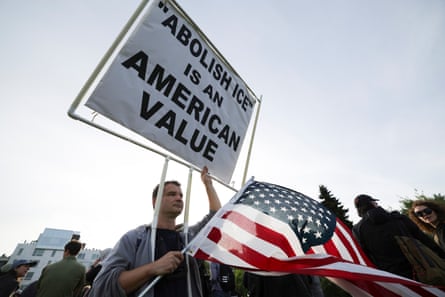
Philadelphia district attorney Larry Krasner, long a firebrand figure in city politics, carefully asked for peaceful protest, and pledged to uphold the rule of law as the city manages public demonstrations. But he described the use of federal troops as a provocation, and Trump as a wannabe dictator and criminal.
“The notion that we’re actually going to talk to somebody like that in a way that is reasonable makes no sense because we all know what he’s actually up to,” he said at a press conference Thursday. “What he’s actually up to is setting up a military overthrow of the United States, and he’s doing it like every wannabe dictator and successful dictator has done in the past, which is that you have to scare the population and convince them that there’s a bonafide emergency when there isn’t.”
The Chicago mayor Brandon Johnson called for “constitutional policing” as both upgunned Ice units and protesters descend on the city this weekend. In a press conference Wednesday, Johnson said he believes his city has been targeted by the administration and by conservatives for policies perceived to be supportive of illegal immigration, specifically noting how Texas governor Greg Abbott trafficked immigrants to the city as a political stunt.
“I will say that it is clear that there is more intentionality around the Trump’s administration to attack Democratically-run cities,” Johnson said. “This president’s desire to not only militarize and criminalize, but his commitment to drive chaos, is something that I’ve said from the very beginning is not only reckless but it’s incomprehensible, quite frankly. So, we’re going to protect people’s right to assemble while also ensuring that Chicagoans can get through their day-to-day.”
Just as city leaders have been anticipating a crackdown, Trump administration leaders have been expecting people to respond.
In speeches made to private groups in 2023 and 2024, Russell Vought – one of the main architects of Project 2025 and current chief of the office of management and budget – argued for the use of the Insurrection Act to use the military to put down protests he predicted would emerge from administration policies.
“We want to be able to shut down the riots and not have the legal community or the defense community come in and say: ‘That’s an inappropriate use of what you’re trying to do,’” he said.
The Center for Renewing America, a Christian conservative thinktank founded by Vought, also argued in a policy brief in 2024 that the president has sweeping authority to use the military as a tool for immigration enforcement, and called on a future president Trump to invoke the Insurrection Act.
Trump campaigned on a pledge to use the military to assist in immigration enforcement.
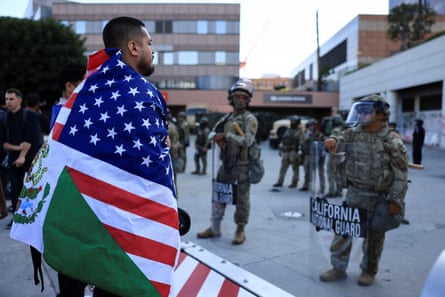
“I can see myself using the National Guard and, if necessary, I’d have to go a step further,” he told Time magazine. “We have to do whatever we have to do to stop the problem we have.”
In that interview, Trump lambasted “Democratic-run cities” for failing to address “migrant crime”, arguing that the use of the military would be justified in these places. “I’ve used the National Guard in Minneapolis. And if I didn’t use it, I don’t think you’d have Minneapolis standing right now, because it was really bad,” he said. “But I think in terms of the National Guard. But if I thought things were getting out of control, I would have no problem using the military, per se.”
The Posse Comitatus Act has been widely understood to prohibit troops from engaging in domestic law enforcement functions targeting civilians without the invocation of the Insurrection Act. But Trump claimed that undocumented immigrants should be considered “invaders” and not civilians for purposes of that law.
The US district court judge Charles R Breyer rebuked the Trump administration late Thursday for its activation of national guard units in California, and for its broader argument that decisions made by the president about how to use the military lay beyond judicial review. The 36-page order required Trump to return control of the units to the state governor, Gavin Newsom, by noon Friday.
An appellate panel of the ninth circuit court put Breyer’s ruling on hold late Thursday evening, leaving Trump’s use of the military in cities in a state of legal limbo for now. But Breyer’s ruling notes that Trump’s assertion that protests constitute a threat of rebellion does not justify national guard activation, and declares that failing to work with the governor violates the law.
Contrast this with how conservative states with large progressive cities are approaching protests this weekend. The Texas governor Greg Abbott has already activated national guard units, with 5,000 troops being sent to manage “No Kings Day” protests across the state.
In Georgia, a protest Wednesday on Buford Highway in Brookhaven – the heart of metro Atlanta’s immigrant community – ended in teargas and six arrests, with charges ranging from disorderly conduct to assaulting a peace officer.
“In Georgia, if you engage in violence for the purpose of changing public policy, you can be charged with Domestic Terrorism,” wrote the Georgia attorney general, Chris Carr, on Thursday. “So, for those trying to make their weekend plans, the bottom line is this – we will defend the right to peacefully protest, and we will not hesitate to bring Domestic Terrorism charges for those who earn it. We are not California or New York. We are Georgia. We don’t make excuses for criminals here. We prosecute them.”
Progressive leaders of American cities on the edge right now are matching the tone of this rhetoric.
“What we have seen in Los Angeles is really not about immigration,” Johnson said in Chicago. “This is not about policy. This is about power. We have a tyrant in the White House who has a complete disregard for our constitution and the dismissing of our democracy.”

 German (DE)
German (DE)  English (US)
English (US)  Spanish (ES)
Spanish (ES)  French (FR)
French (FR)  Hindi (IN)
Hindi (IN)  Italian (IT)
Italian (IT)  Russian (RU)
Russian (RU)  12 hours ago
12 hours ago


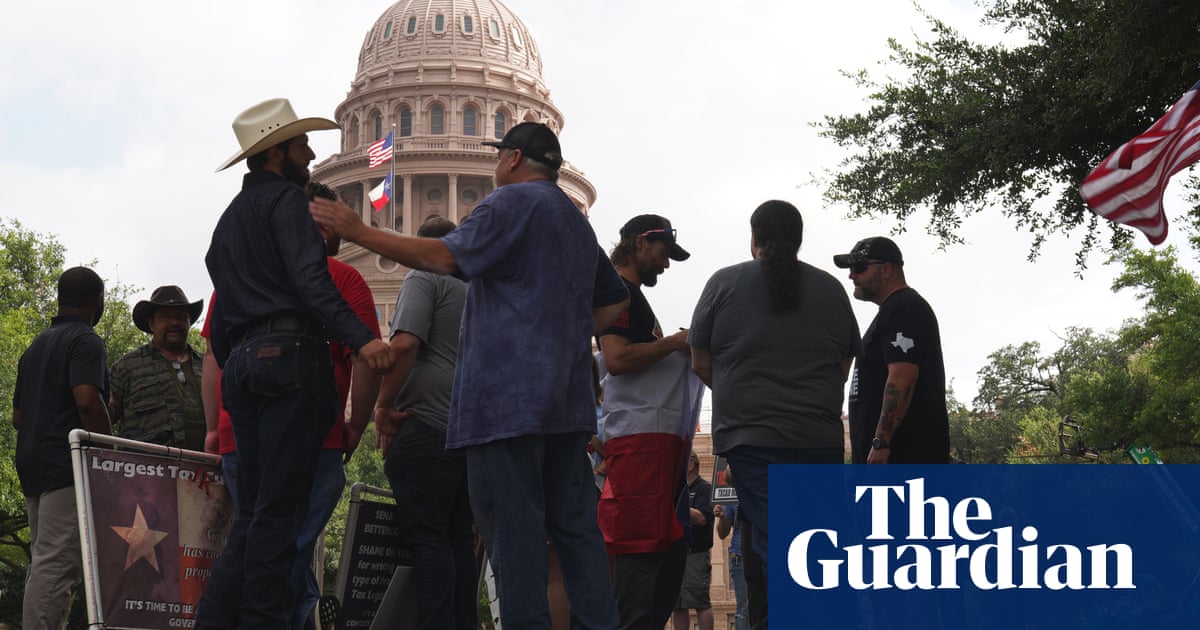
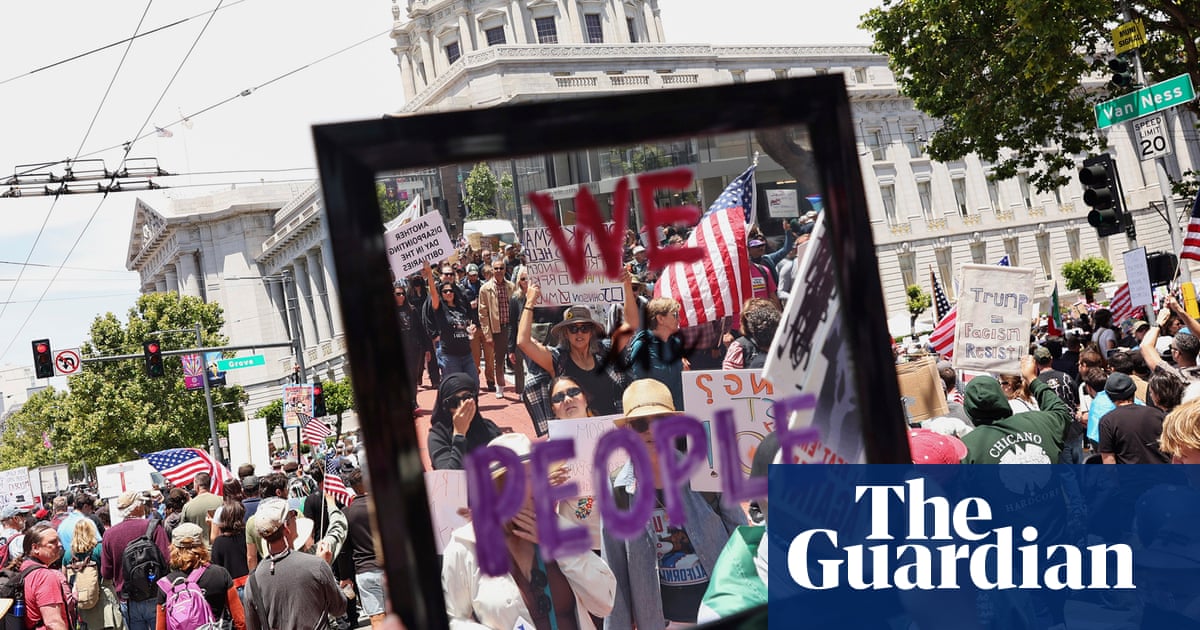












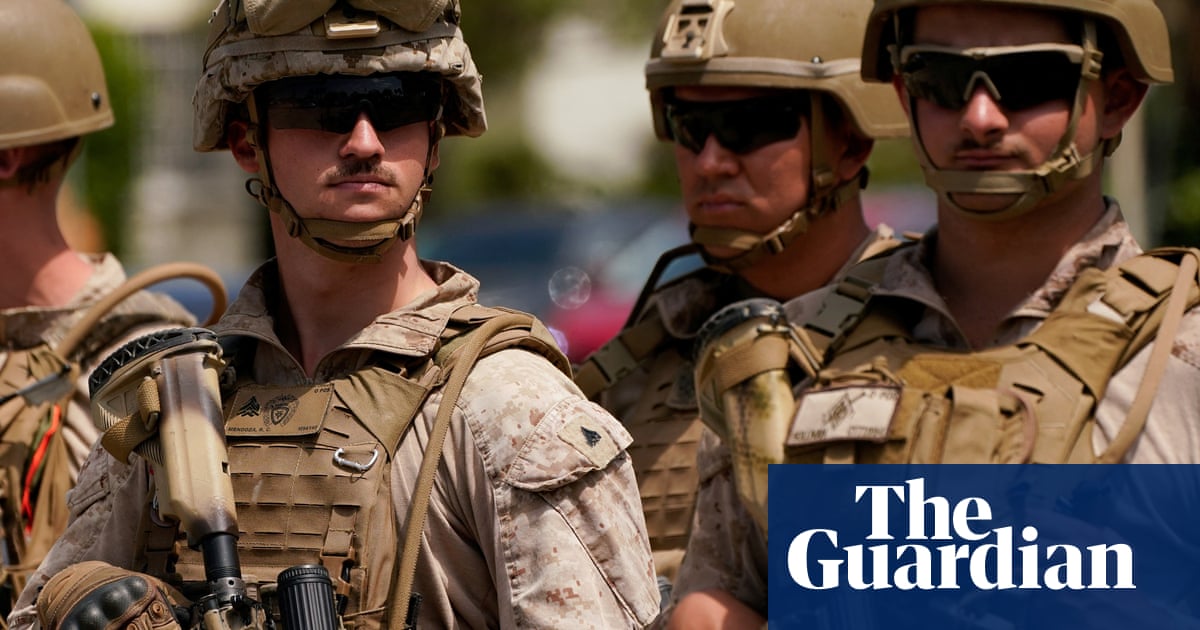







Comments